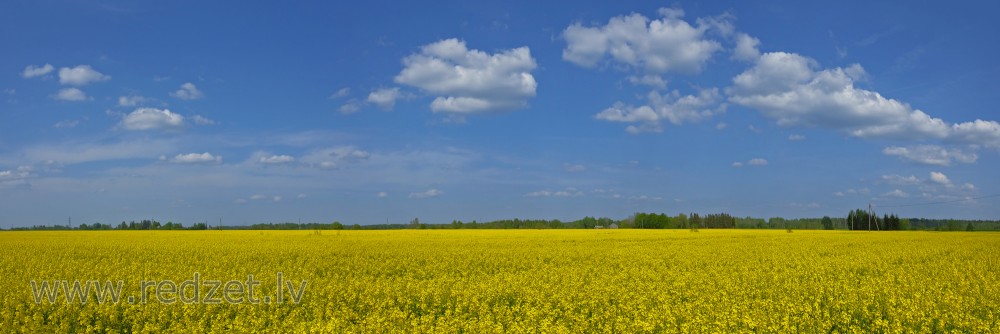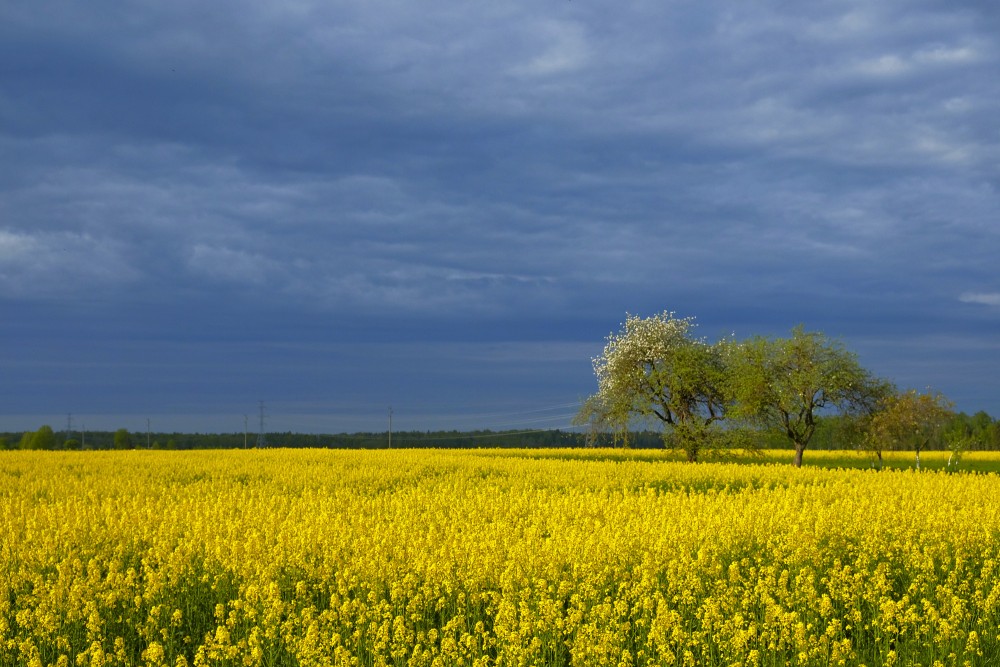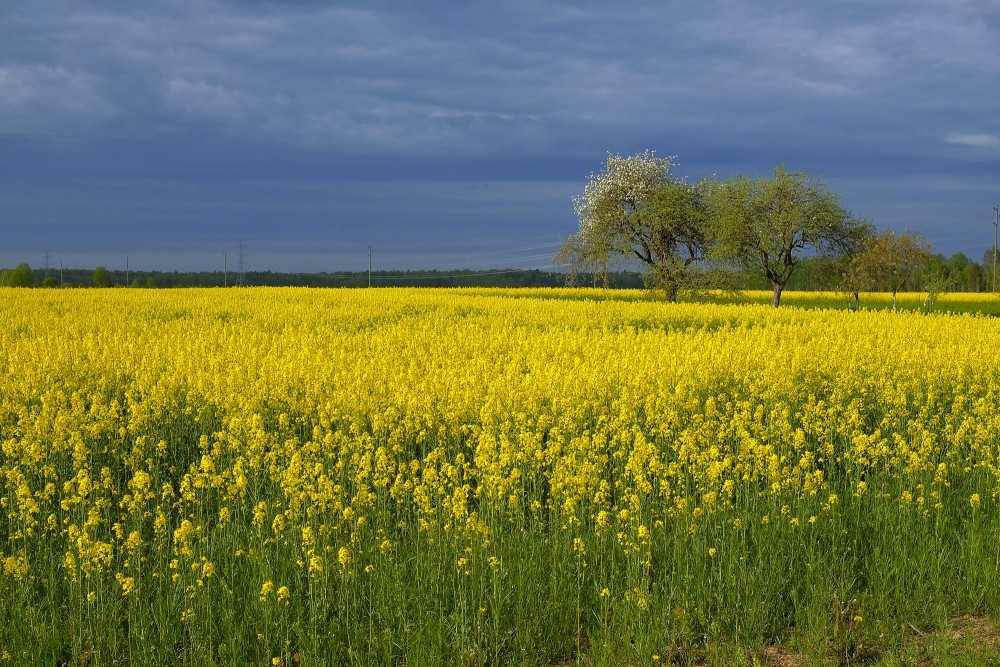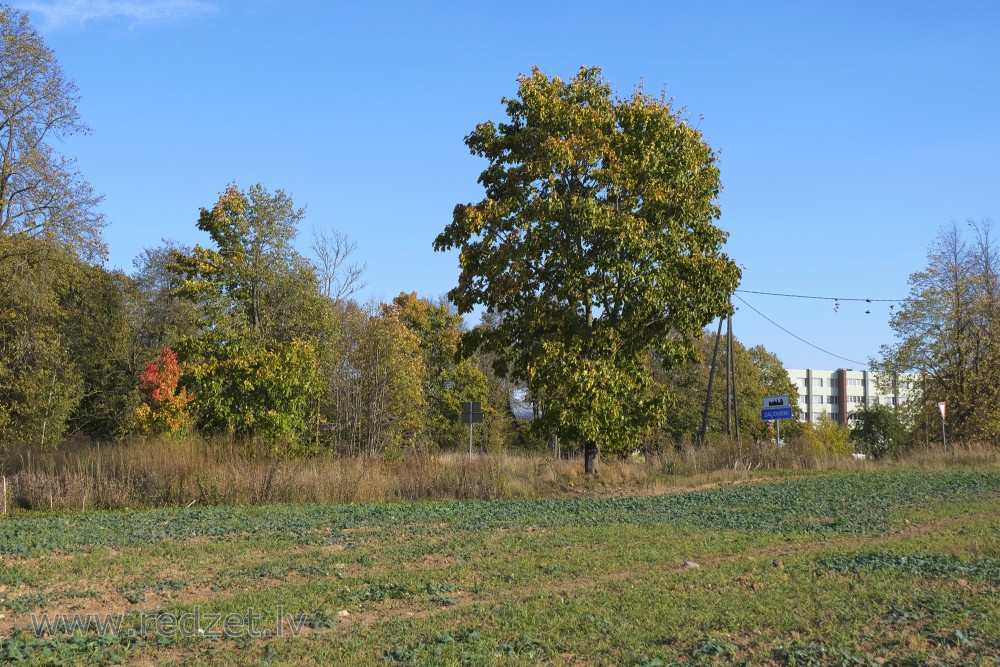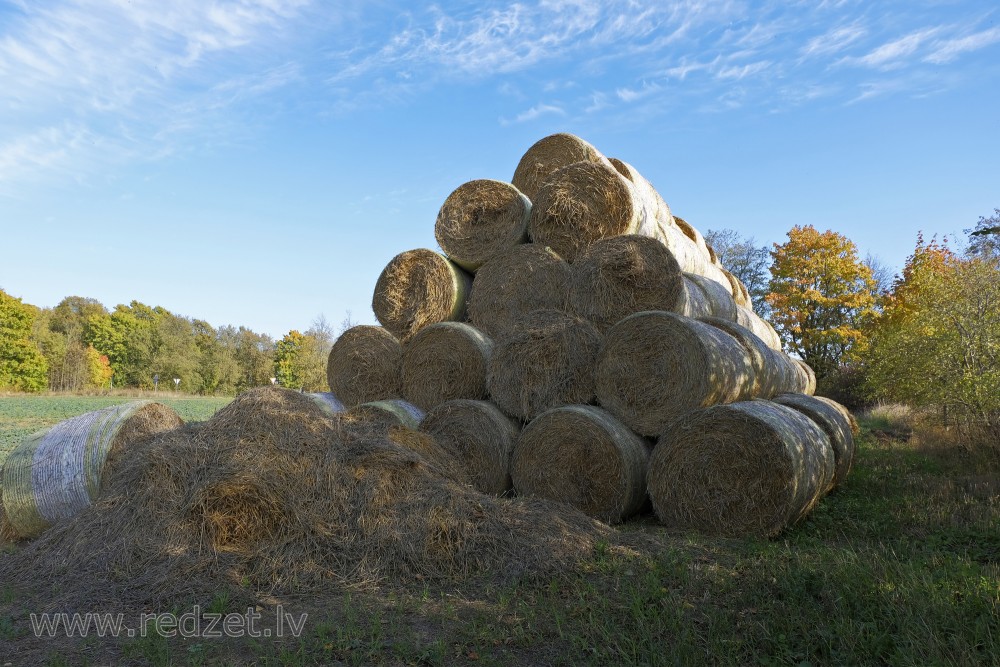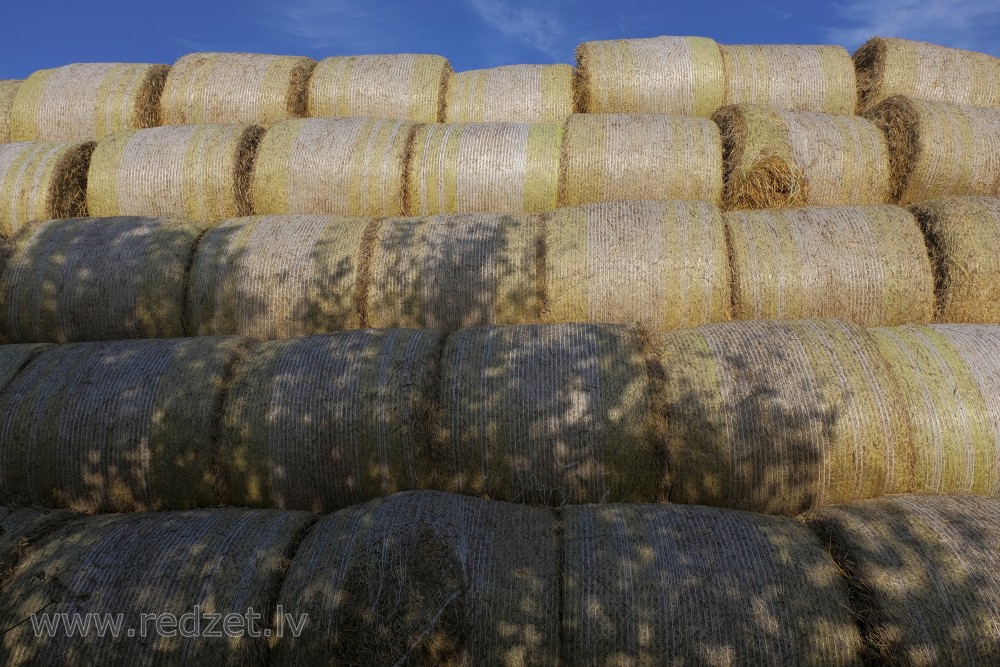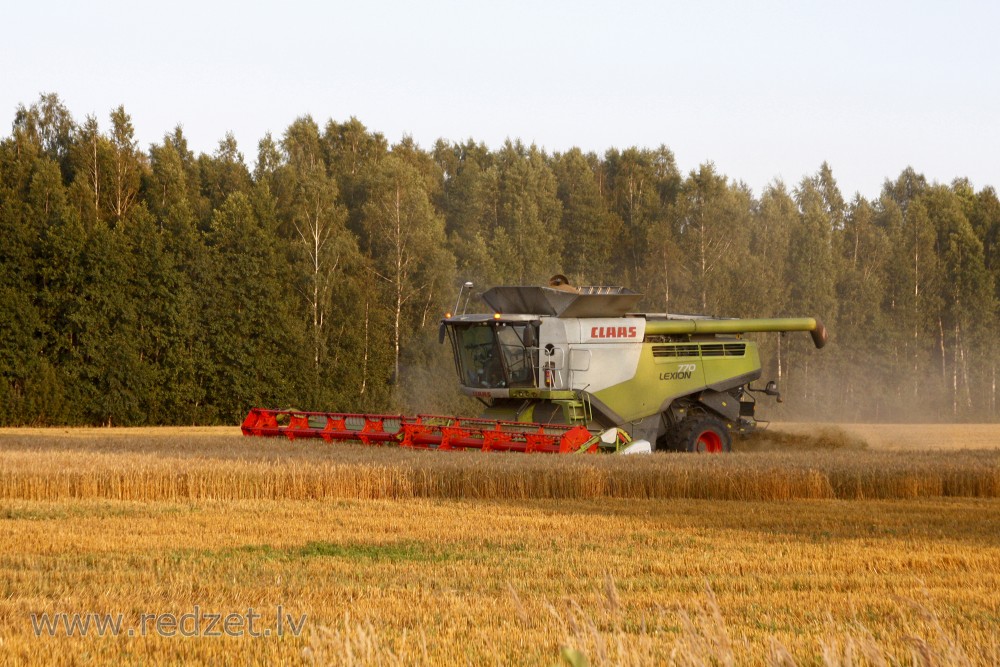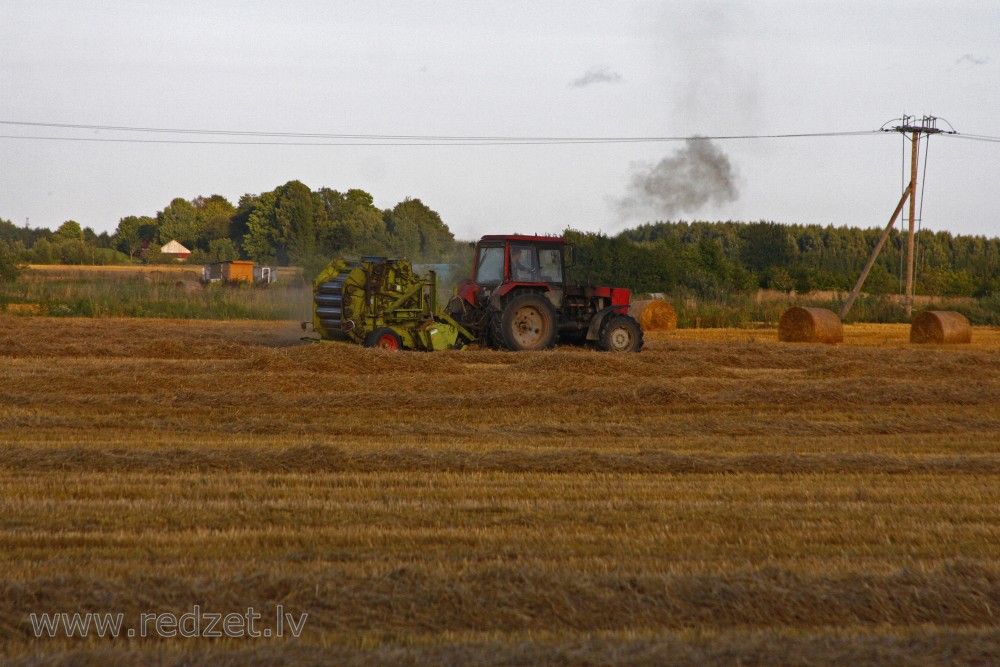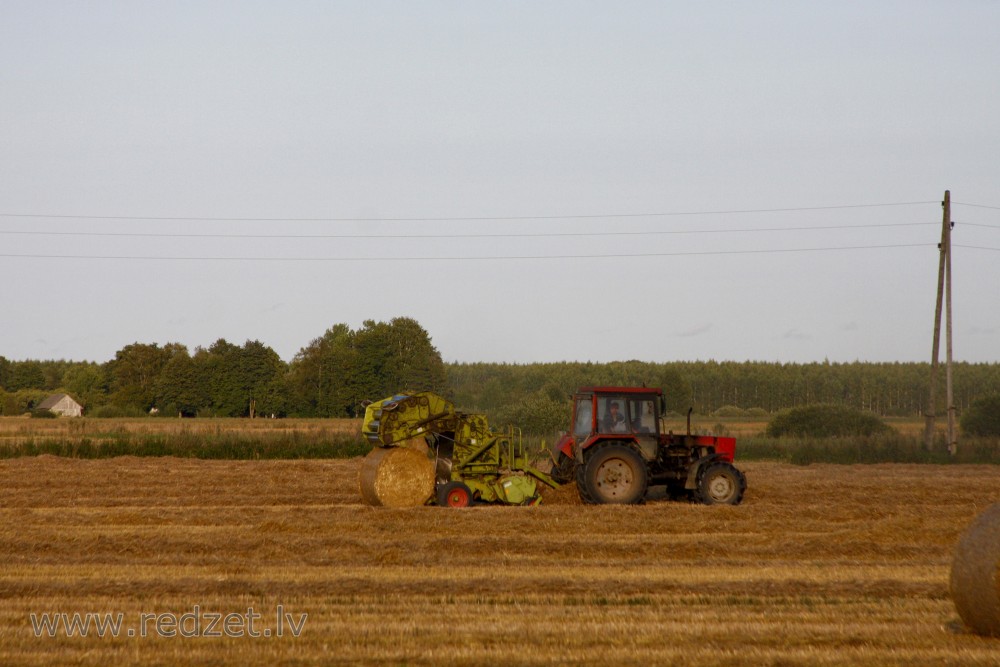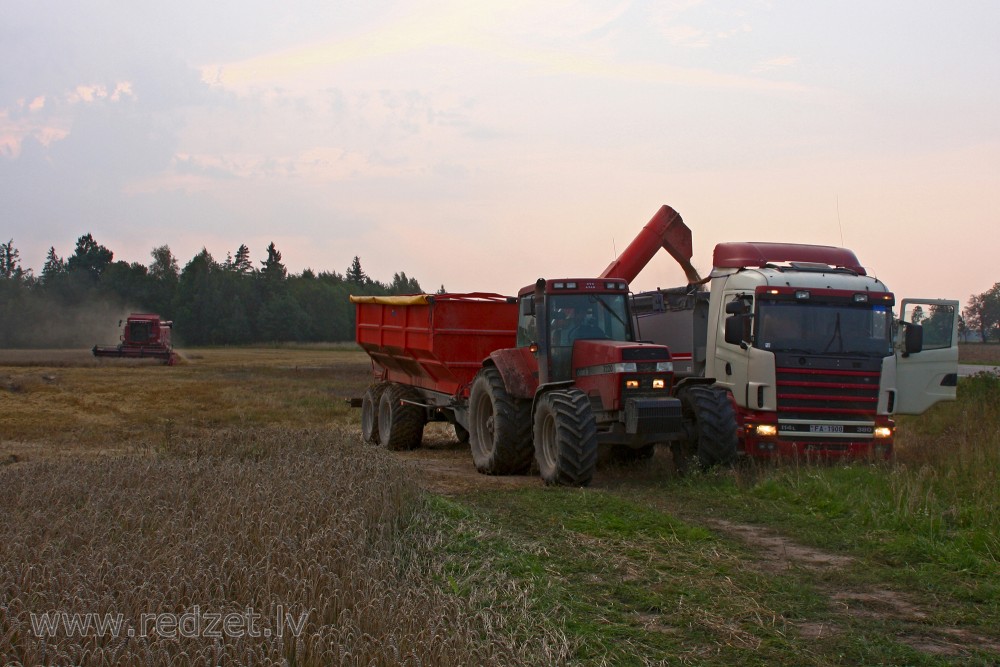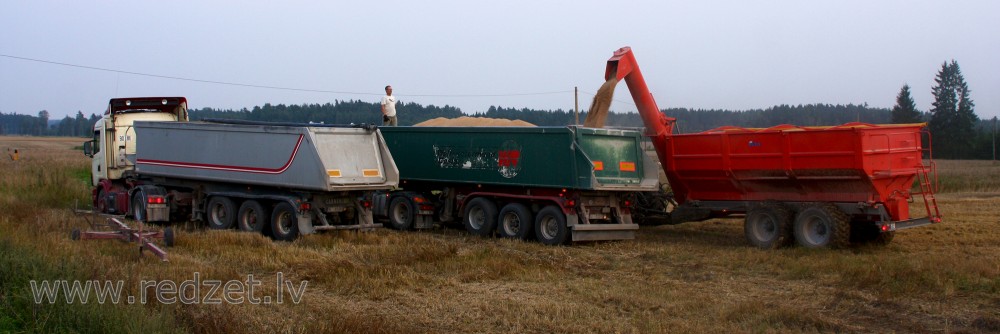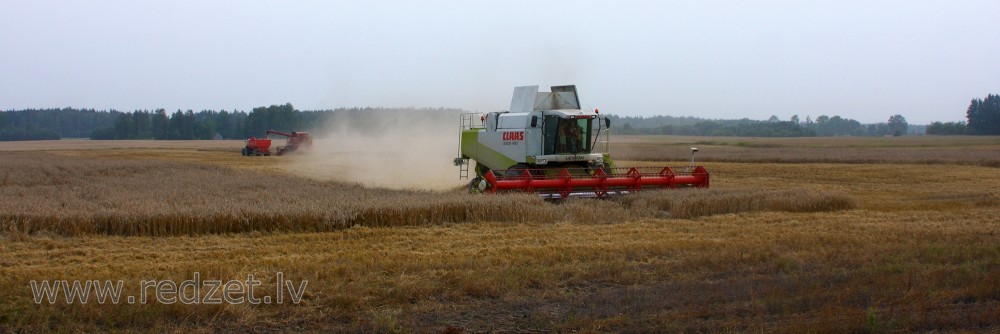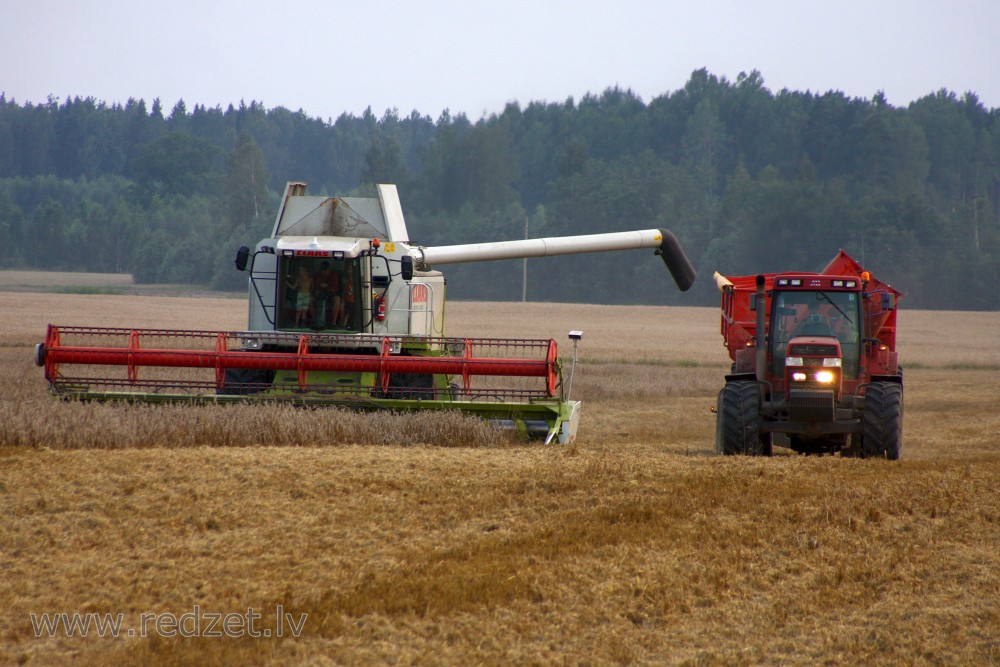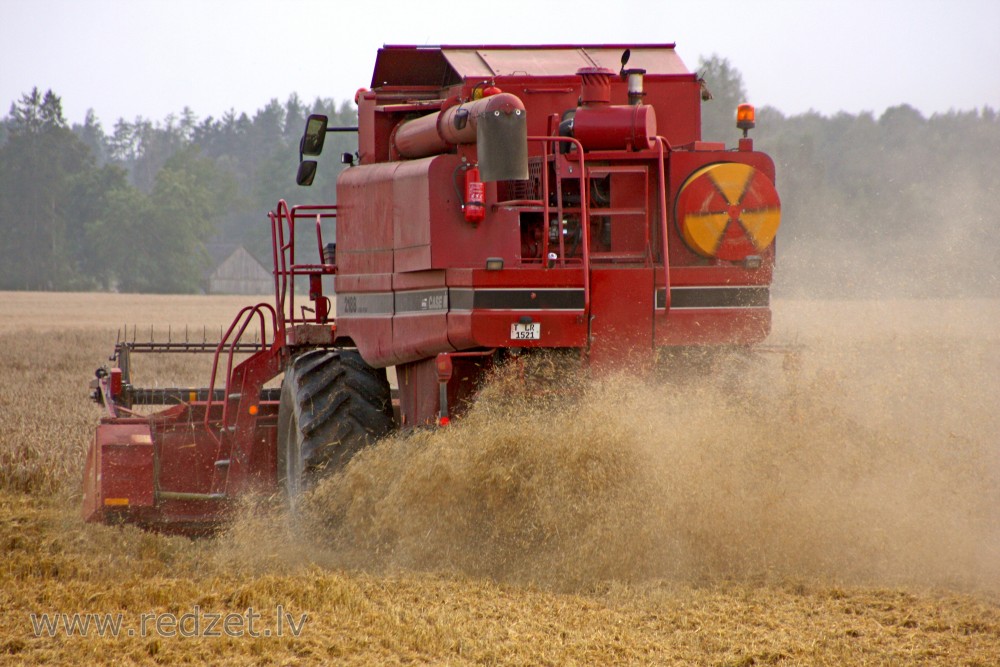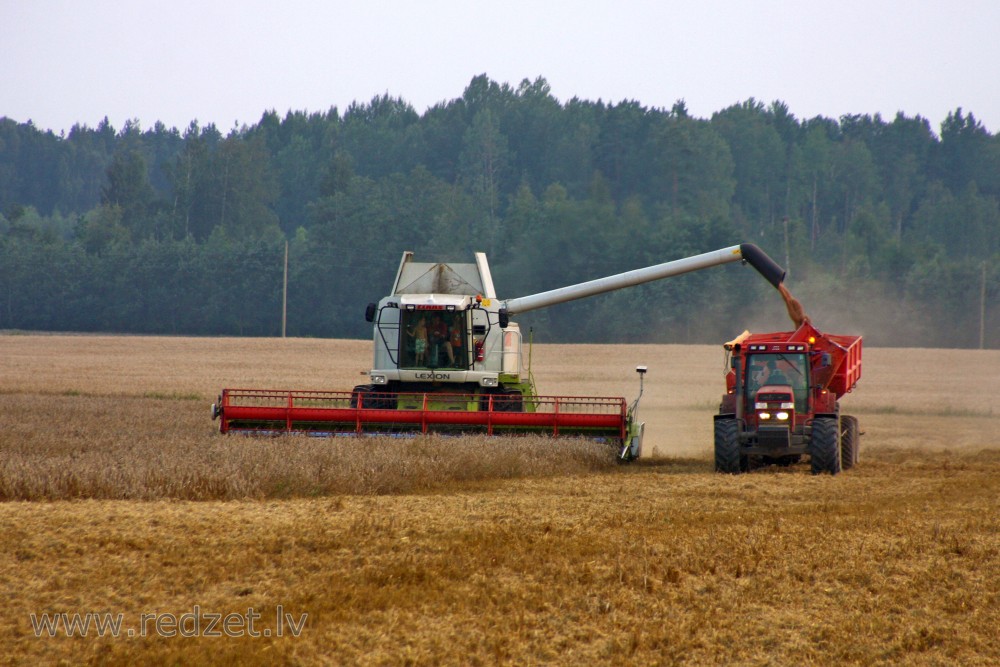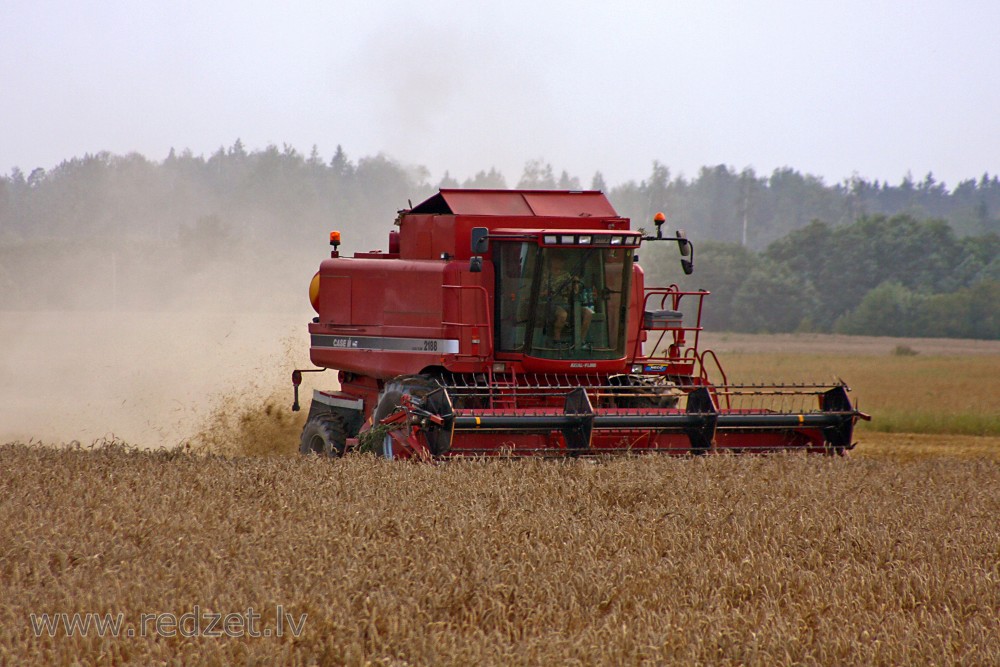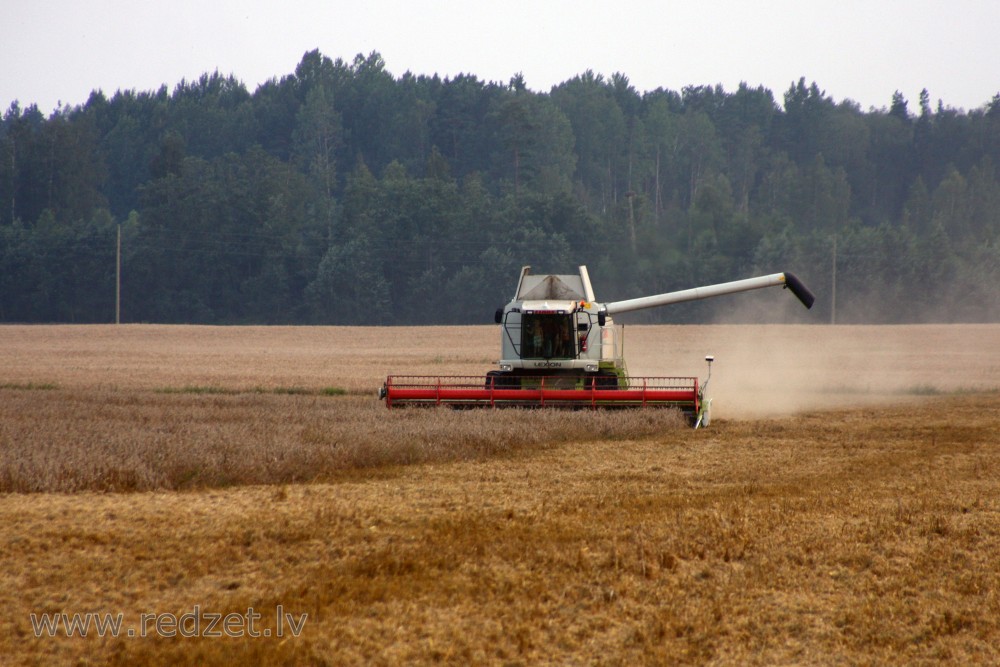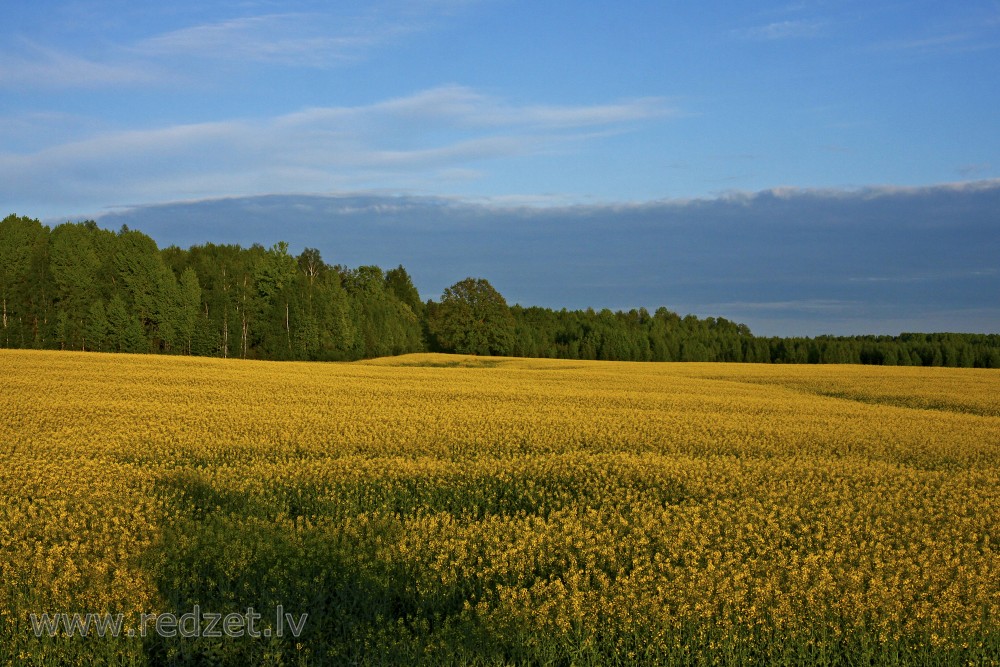Agriculture
Agriculture is the cultivation of land and breeding of animals and plants to provide food, fiber, medicinal plants and other products to sustain and enhance life. Agriculture was the key development in the rise of sedentary human civilization, whereby farming of domesticated species created food surpluses that enabled people to live in cities. The study of agriculture is known as agricultural science. The history of agriculture dates back thousands of years; people gathered wild grains at least 105,000 years ago and began to plant them around 11,500 years ago before they became domesticated. Pigs, sheep, and cattle were domesticated over 10,000 years ago. Crops originate from at least 11 regions of the world. Industrial agriculture based on large-scale monoculture has in the past century come to dominate agricultural output, though about 2 billion people worldwide still depend on subsistence agriculture.
Modern agronomy, plant breeding, agrochemicals such as pesticides and fertilizers, and technological developments have sharply increased yields from cultivation, but at the same time have caused widespread ecological and environmental damage. Selective breeding and modern practices in animal husbandry have similarly increased the output of meat, but have raised concerns about animal welfare and environmental damage through contributions to global warming, depletion of aquifers, deforestation, antibiotic resistance, and growth hormones in industrially produced meat. Genetically modified organisms are widely used, although they are banned in several countries.
The major agricultural products can be broadly grouped into foods, fibers, fuels, and raw materials (such as rubber). Classes of foods include cereals (grains), vegetables, fruits, oils, meat, milk, fungi and eggs. Over one-third of the world's workers are employed in agriculture, second only to the service sector, although the number of agricultural workers in developed countries has decreased significantly over the past several centuries.
History
Origins
The development of agriculture enabled the human population to grow many times larger than could be sustained by hunting and gathering. Agriculture began independently in different parts of the globe, and included a diverse range of taxa. At least 11 separate regions of the Old and New World were involved as independent centers of origin. Wild grains were collected and eaten from at least 105,000 years ago. From around 11,500 years ago, the eight Neolithic founder crops, emmer and einkorn wheat, hulled barley, peas, lentils, bitter vetch, chick peas and flax were cultivated in the Levant. Rice was domesticated in China between 11,500 and 6,200 BC with earliest known cultivation from 5,700 BC, followed by mung, soy and azuki beans. Sheep were domesticated in Mesopotamia between 13,000 and 11,000 years ago. Cattle were domesticated from the wild aurochs in the areas of modern Turkey and Pakistan some 10,500 years ago. Domestic pigs had multiple centres of origin in Eurasia, including Europe, East Asia and Southwest Asia, where wild boar were first domesticated about 10,500 years ago. In the Andes of South America, the potato was domesticated between 10,000 and 7,000 years ago, along with beans, coca, llamas, alpacas, and guinea pigs. Sugarcane and some root vegetables were domesticated in New Guinea around 9,000 years ago. Sorghum was domesticated in the Sahel region of Africa by 7,000 years ago. Cotton was domesticated in Peru by 5,600 years ago, and was independently domesticated in Eurasia. In Mesoamerica, wild teosinte was domesticated to maize by 6,000 years ago. Scholars have developed a number of hypotheses to explain the historical origins of agriculture. Studies of the transition from hunter-gatherer to agricultural societies indicate an initial period of intensification and increasing sedentism; examples are the Natufian culture in the Levant, and the Early Chinese Neolithic in China. Then, wild stands that had previously been harvested started to be planted, and gradually came to be domesticated.
Civilizations
In Eurasia, the Sumerians started to live in villages from about 8,000 BC, relying on the Tigris and Euphrates rivers and a canal system for irrigation. Ploughs appear in pictographs around 3,000 BC; seed-ploughs around 2,300 BC. Farmers grew wheat, barley, vegetables such as lentils and onions, and fruits including dates, grapes, and figs. Ancient Egyptian agriculture relied on the Nile River and its seasonal flooding. Farming started in the predynastic period at the end of the Paleolithic, after 10,000 BC. Staple food crops were grains such as wheat and barley, alongside industrial crops such as flax and papyrus. In India, wheat, barley, and jujube were domesticated by 9,000 BC, soon followed by sheep and goats. Cattle, sheep and goats were domesticated in Mehrgarh culture by 8,000–6,000 BC. Cotton was cultivated by the 5th-4th millennium BC. There is archeological evidence of an animal-drawn plough from 2,500 BC in the Indus Valley Civilization. In China, from the 5th century BC there was a nationwide granary system and widespread silk farming. Water-powered grain mills were in use by the 1st century BC, followed by irrigation. By the late 2nd century, heavy ploughs had been developed with iron ploughshares and mouldboards. These slowly spread westwards across Eurasia. Asian rice was domesticated 8,200–13,500 years ago – depending on the molecular clock estimate that is used – on the Pearl River in southern China with a single genetic origin from the wild rice Oryza rufipogon. In ancient Greece and Rome, the major cereals were wheat, emmer, and barley, alongside vegetables including peas, beans, and olives. Sheep and goats were kept mainly for dairy products.
In the Americas, crops domesticated in Mesoamerica (apart from teosinte) include squash, beans, and cocoa. Cocoa was being domesticated by the Mayo Chinchipe of the upper Amazon around 3,000 BC. The turkey was probably domesticated in Mexico or the American Southwest. The Aztecs developed irrigation systems, formed terraced hillsides, fertilized their soil, and developed chinampas or artificial islands. The Mayas used extensive canal and raised field systems to farm swampland from 400 BC. Coca was domesticated in the Andes, as were the peanut, tomato, tobacco, and pineapple. Cotton was domesticated in Peru by 3,600 BC. Animals, too, including llamas, alpacas, and guinea pigs were domesticated in the region. In North America, the indigenous people of the East domesticated crops such as sunflower, tobacco, squash and Chenopodium. Wild foods including wild rice and maple sugar were harvested. The domesticated strawberry is a hybrid of a Chilean and a North American species, developed by breeding in Europe and North America. The indigenous people of the Southwest and the Pacific Northwest practiced forest gardening and fire-stick farming. The natives controlled fire on a regional scale to create a low-intensity fire ecology which sustained a low-density agriculture in loose rotation; a sort of "wild" permaculture. A system of companion planting called the Three Sisters was developed on the Great Plains, the three crops being winter squash, maize, and climbing beans.
Indigenous Australians, long supposed to have been nomadic hunter-gatherers, practised systematic burning to enhance natural productivity in fire-stick farming. The Gunditjmara and other groups developed eel farming and fish trapping systems from some 5,000 years ago. There is evidence of 'intensification' across the whole continent over that period. In two regions of Australia, the central west coast and eastern central Australia, early agriculture with crops of yams, native millet, and bush onions may have been practised in permanent settlements.
Revolution
In the Middle Ages, both in the Islamic world and in Europe, agriculture was transformed with improved techniques and the diffusion of crop plants, including the introduction of sugar, rice, cotton and fruit trees such as the orange to Europe by way of Al-Andalus. After 1492, the Columbian exchange brought New World crops such as maize, potatoes, tomatoes, sweet potatoes and manioc to Europe, and Old World crops such as wheat, barley, rice and turnips, and livestock including horses, cattle, sheep and goats to the Americas. Irrigation, crop rotation, and fertilizers were greatly developed in the past 200 years, starting with the British Agricultural Revolution, allowing global population to rise significantly. Since 1900, agriculture in the developed nations, and to a lesser extent in the developing world, has seen large rises in productivity as human labor has been replaced by mechanization, and assisted by synthetic fertilizers, pesticides, and selective breeding. The Haber-Bosch method allowed the synthesis of ammonium nitrate fertilizer on an industrial scale, greatly increasing crop yields and sustaining a further increase in global population. Modern agriculture has raised political issues including water pollution, biofuels, genetically modified organisms, tariffs and farm subsidies, leading to alternative approaches such as the organic movement.
en.wikipedia.org
